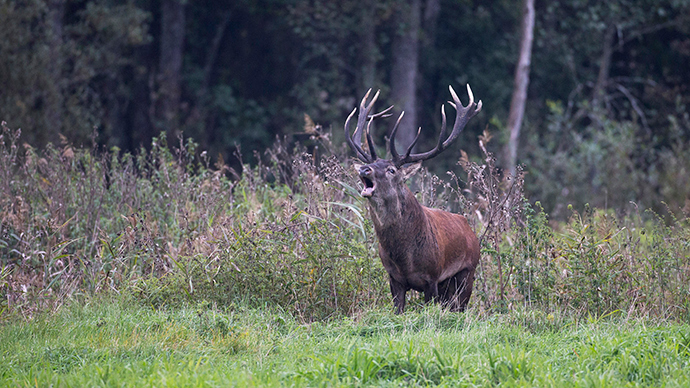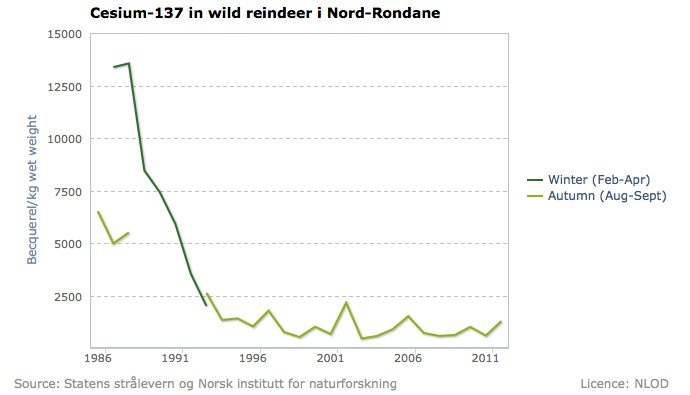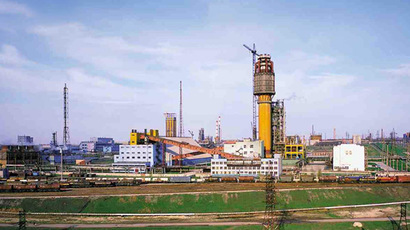Radioactive reindeer: Mushrooms blamed for Cesium spike in Norway

Unexpectedly high levels of radioactivity have been found in Norway’s reindeer this autumn – almost 30 years after a radioactive cloud spread in the atmosphere of the country following the Chernobyl tragedy, say the country’s scientists.
In September, scientists from the Norwegian Radiation Protection
Authority (NRPA) marked a sudden record in radioactivity levels:
up to 8,200 becquerels per kilo of Cesium-137, a radioactive
element, were found in reindeer in Jotunheimen a mountainous area
in central Norway.
The record “is extreme,” Lavrans Skuterud, a scientist
at the NRPA, told science and research newspaper Forskning.
Skuterud compared the amount of the isotope this year with that
of 2012, when the highest level of cesium in a similar probe
among the local reindeer was 1,500 becquerels.
Not only deer were found to be highly radioactive, the
researchers also found high amounts of cesium in the local sheep.
Some 4,500 becquerels per kilo of meat from sheep was measured in
Valdres district and the Gudbrandsdalen area in southeast Norway.
The limit for safe lamb/mutton consumption is only 600
becquerels.
Skuterud said that the cause of deer and sheep radioactivity
might be gypsy mushroom (Cortinarius Caperatus). The mushroom
itself is safe to eat, but it can absorb a lot of radioactivity.
“This year, there have been extreme amounts of mushroom. In
addition, the mushroom season has lasted for a long time. And the
mushroom has grown very high up on the mountains,” Skuterud
added.

Skuterud believes that the ‘radioactive reindeer’
problem has deeper roots, but wonders if it can be tracked down
to Chernobyl accident happened in 1986, almost 30 years ago.
Cesium-137’s physical half-life is actually 30 years.
“The level of [radioactivity] in the environment still
decreases faster than this. Some of it is washed out and most of
it is bound to the soil,” Skuterud also said as quoted by
the Local.
The scientist added that only a small part of the radioactivity
is in circulation throughout the food chain.
“When we watch the [radioactive] values in the grazing
animals in autumn, it bounces up and down, and it seems to be
everlasting. But the winter values in reindeer luckily show a
stable decrease.”
The NRPA began measuring radioactive cesium back in 1960-s. After
Chernobyl tragedy the levels of radioactivity turned increasingly
high, added Skuterud.
The Chernobyl disaster occurred on April 26, 1986, at reactor
number four of the Chernobyl Nuclear Power Plant in Ukraine,
which was then a republic of the Soviet Union. As a result of the
explosion and fire, a huge radioactive cloud spread into the
atmosphere, covering thousands of miles of Soviet and European
territories.
Not only was Ukraine affected, but also adjoining areas in Russia
and Belarus. Radiation spikes were recorded in Sweden, Norway,
Austria and Finland. Approximately 100,000 square kilometers of
land was significantly contaminated.














